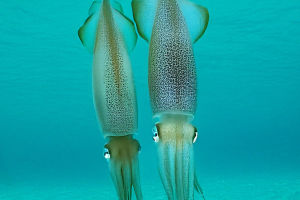If you've ever had the pleasure of exploring the underwater world of the Philippines, then you may have come across one of the most striking and colorful fish in the ocean – the Philippine butterflyfish.
With its vibrant colors and unique patterns, this small, eye-catching fish is not only a joy to observe but also plays a vital role in its marine ecosystem.
In this article, we'll dive deep into the fascinating world of the Philippine butterflyfish and discover what makes it so special.
The Philippine butterflyfish
Video: uwlunatic
Physical Appearance and Features
The Philippine butterflyfish is easily recognizable by its bright, colorful appearance. We can spot these beautiful creatures by their large, elongated bodies and broad, flat faces. The bright yellow and black stripes running across their bodies create an unmistakable and stunning visual effect. These fish are typically around 10-15 cm long, though some can grow slightly larger.
What makes the Philippine butterflyfish stand out even more are the bold, contrasting patterns on their bodies. They usually have a dark stripe running across their eyes, which gives them a “mask” like appearance. This makes them look like little underwater superheroes! Their striking coloration and intricate patterns are not only visually stunning but also help them blend into the coral reefs and rocky environments where they live.
Habitat and Distribution
We'll typically find the Philippine butterflyfish in warm, tropical waters, particularly around the Philippines and nearby areas in the Indo-Pacific region. These fish prefer to live in coral reefs, which offer plenty of hiding places and food sources. The coral reefs are vital to the survival of the butterflyfish, as they provide a rich source of algae, small invertebrates, and other marine life that make up their diet.
The Philippine butterflyfish is a relatively common species in these areas, but like many marine creatures, they face growing threats from climate change and coral bleaching. As the reefs are damaged, the fish's habitat is also threatened, making conservation efforts critical to preserving this beautiful species for future generations.
Diet and Feeding Habits
When it comes to food, the Philippine butterflyfish is primarily a herbivore. We can often spot them nibbling on algae, which is abundant on the coral reefs. These fish have specialized teeth that are perfectly suited for scraping algae off rocks and coral. While algae makes up the majority of their diet, they may also eat small invertebrates or plankton when the opportunity arises.
Interestingly, the Philippine butterflyfish is not just foraging aimlessly. They are very selective eaters, focusing on specific types of algae that provide them with the nutrients they need to thrive. This selective feeding behavior helps keep the reefs healthy by controlling algae growth, which can otherwise become overwhelming and harmful to the delicate balance of the ecosystem.
Behavior and Social Structure
The Philippine butterflyfish is known for its peaceful and solitary nature. Unlike some other species of fish that prefer large schools, the Philippine butterflyfish usually prefers to roam the reefs on their own or in small pairs. This makes them a little harder to spot in the wild, as they tend to blend in with the coral and keep a low profile.
These fish are also territorial and will defend their space against other fish, especially when they feel threatened. While they are not particularly aggressive, they will use their colorful markings to communicate with other fish and establish their dominance in a certain area. In some cases, we might even see them engaging in small displays of aggression, such as flaring their fins, to assert their territory.
Reproduction and Lifespan
Reproduction for the Philippine butterflyfish is an interesting process. These fish are known to form monogamous pairs, where one male and one female will mate and raise offspring together. The female will lay her eggs on coral surfaces, and the male will fertilize them externally. The eggs hatch into larvae, which eventually settle on the reef and begin their life as juvenile fish.
The lifespan of the Philippine butterflyfish is typically around 5 to 10 years, although this can vary depending on environmental factors. In the wild, these fish can live longer, but many face threats from predators and environmental changes that can shorten their lifespan.
Conservation and Threats
Unfortunately, the Philippine butterflyfish is not immune to the threats facing many marine species today. Coral reef destruction, pollution, and overfishing are just a few of the dangers these fish face. As the coral reefs suffer from bleaching and degradation, the delicate balance of their ecosystem is disrupted, leaving the butterflyfish vulnerable.
To help protect these beautiful creatures, conservation efforts are being made to preserve coral reefs and marine environments. Organizations and governments are working together to promote sustainable fishing practices, reduce pollution, and protect coral ecosystems. By supporting these initiatives, we can ensure that the Philippine butterflyfish and other marine species continue to thrive for generations to come.
Conclusion
The Philippine butterflyfish is a remarkable species that plays an important role in maintaining the health of coral reef ecosystems. With its stunning appearance and fascinating behaviors, it's no wonder that so many people are captivated by this underwater gem. However, as with many species, the future of the Philippine butterflyfish is at risk. By raising awareness and supporting conservation efforts, we can do our part to protect these beautiful creatures and their habitats.
So, Lykkers, the next time you find yourself in the Philippines or exploring other tropical reefs, keep an eye out for the colorful Philippine butterflyfish. Not only will you get to see one of the ocean's most beautiful creatures up close, but you'll also be reminded of the importance of protecting our precious marine life. Happy exploring!


